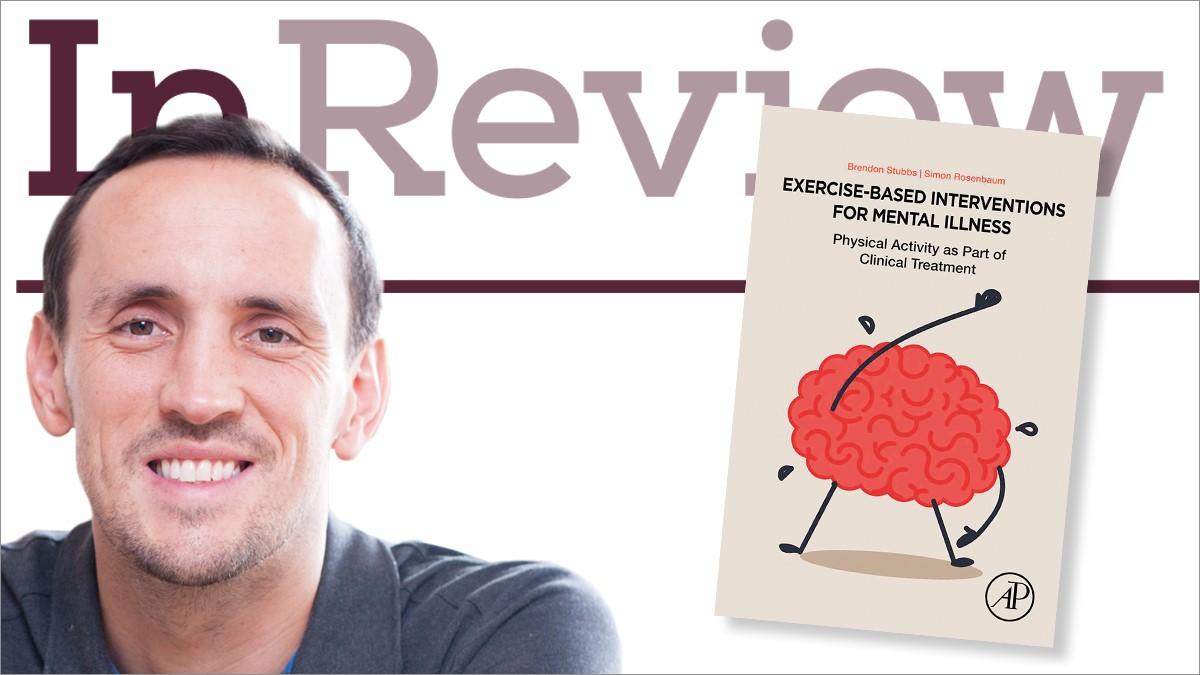The book covers exercise strategies specifically tailored for common mental illnesses, such as depression, schizophrenia, bipolar disorder, and more.

Featured book by Brendon Stubbs, Simon Rosenbaum Elsevier ISBN 9780128126066
When I was asked to review this book, I jumped at the opportunity. I am an enormous fan of Brendan Stubbs’ work and this text aimed at exercise practitioners is a significant contribution to a growing body of evidence in this field. I believe that physiotherapists can no longer choose to bury their heads in the sand about the interdependence between physical and mental health. Stubbs and Rosenbaum, as editors, have drawn in world leading experts in this field to deliver a comprehensive text, which should appeal to most physiotherapists with an interest in physical activity.
Before I become too impassioned and effusive, I am going to state my two major grievances up front. First, cost. At over £70 for a paperback copy, it is perhaps currently priced outside the personal reading list. It is, after all, only 350 pages long. As a text that many will feel is supplementary, rather than central to their area of practice, I fear it will go unread by the masses. This would be a tragedy as the content is too important to miss, given our increasingly complex cohorts of patients.
My second grumble is one of formatting. I am a learner who finds reading a page of heavy text a challenge to my concentration. The font style, font size and referencing style of this edition are sometimes challenging in this regard. At times it felt as if I was reading an academic article or essay. I prefer my textbooks to be more colourful and pictorial to support my learning style, but that is my personal preference. As a text aimed at exercise professionals, rather than academics, I hope it proves to be accessible.
All that aside, there are so many positives in this book. The chapters are arranged logically, covering the major mental health diagnoses from stress-related disorders to severe mental illnesses. Helpfully, the book covers the life span, from children and young people, through adulthood to older people. The chapters often cross-cut through a range of treatment settings and there is an incredibly current section on the use of technology, which will satisfy the data enthusiasts among us; it is a helpful case study in the value of smartphone and wearable technologies to aid self-management and boost physical activity.
As the title suggests, the focus on exercise-based interventions runs all the way as a clear line of sight throughout the book. The text helpfully explores the biopsychosocial features of mental illness and provides explanations of theories and interventions, some of which will be familiar to physiotherapists, such as brief interventions and motivational interviewing. It tries to bridge the theory-practice gap and uses case studies to provide clear examples. The gaps in the current evidence base are identified throughout and the quality of evidence presented is clearly and critically appraised.
What appealed most was chapter six, on sedentary behaviour as both a cause and effect of mental illness. Increasing physical activity is a major policy issue at present, and this chapter links particularly well with the current direction of physiotherapy in the UK. Similarly, the chapters on alcohol use disorders and eating disorders are intriguing, mainly due to how prevalent and disguised these disorders are in the general population; my biases were challenged. So even for a non-mental health specialist, the content is valid, engaging and relevant to contemporary practice.
This book fills what I think is a critical void in the collective knowledge base of physiotherapy, in terms of mental illness but in physical activity too. There is enough that is relevant to all fields of practice and therefore it should not be isolated as specific to those already working in the speciality. In my opinion, this book should form part of any self-respecting departmental library. As Stubbs and Rosenbaum identify in the introduction: “training in psychopathology and exposure to the unique barriers experienced by people living with a mental illness may not be a standard part of training”.
I would encourage all physiotherapists to engage with the content, however challenging the format may be. I sincerely hope that the cost and formatting issues can be resolved in subsequent editions as this book certainly deserves mass appeal and has the potential to change practice.
Author: Helen Harte, CSP professional adviser
Number of subscribers: 1




































